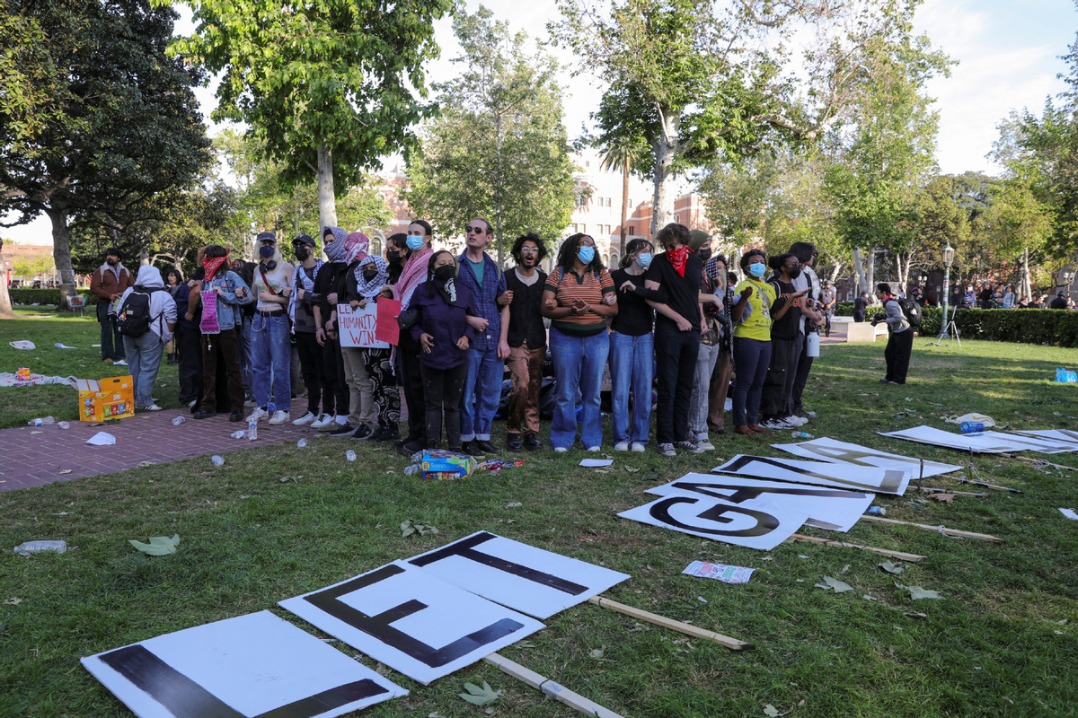Coronavirus adds to problems that Native Americans face
By MAY ZHOU in Houston, Texas | China Daily Global | Updated: 2020-05-15 11:06

The federal government is responsible for providing education, healthcare and other services to the country's Native American tribes by law and various treaties, but such services have historically been inadequate, leaving Native American communities in a perpetual state of poor health with high suicide rates and high dropout rates.
A 2018 report by the US Commission on Civil Rights found that Native Americans and Alaska Natives lack adequate power and water supplies, have the highest rates of diabetes, are five times more likely than non-Hispanic whites to have tuberculosis and that the younger demographic is more likely to commit suicide.
The COVID-19 pandemic has only exacerbated the situation, as it has for other lower-income minority groups, numerous reports show.
According to Indian Health Services, there were 5,999 confirmed cases of novel coronavirus infection in the Native American population as of Tuesday.
A total of 3,668 cases occurred in the Navajo Nation, which includes parts of Arizona, New Mexico and Utah. The Navajo Nation has the third-highest per capita rate of coronavirus infection in the country, after New York and New Jersey.
Native Americans also typically have a higher risk of serious complications because they have a higher rate of diabetes, heart disease and other conditions.
The remote locations of many Native Americans have made it difficult for the tribes to get and distribute goods and services.
An article published on medium.com reported that for the Chilchinbeto chapter of the Navajo Nation in northeastern Arizona, the nearest grocery store and gas station is about 25 miles away. A trip to the closest Walmart requires a 2½ hour drive. The remote location causes online orders to take weeks to arrive.
Ronson Chee, a Native American and principal engineer with Riley Engineering, published an article on indianz.com to explain why the Navajo Nation has been more seriously affected by the coronavirus.
"The disproportionate high rates of COVID-19 on the Navajo Nation has recently made headlines … and has brought to light the lack of in-home sanitation facilities and lack of potable water infrastructure coverage," he wrote.
Chee said that the lack of critical water infrastructure has been cited as one of the primary reasons for the disproportionately high rates of COVID-19 cases on the reservation — many residents don't have ready access to clean water needed for hand-washing and other sanitary uses.
The lack of water infrastructure has been a long-standing issue prior to the pandemic. It is also "one of the primary underlying causes for the multitude of issues that plague the Nation such as high-poverty levels, low socio-economic status, lack of jobs, and other non-COVID-19 health disparities", he wrote.
Congress allocated $8 billion to Native American communities as part of the CARES Act passed in March. However, more than a month passed before the money began to trickle into the community, well after aid money was received by many other states.
Sometimes Native Americans get the wrong kind of aid.
According to NBC News, in mid-March, the Seattle Indian Health Board caring for the area's Native Americans made an urgent request to county, state and federal health agencies: Please send medical supplies.
What the group received three weeks later stunned staff members.
"My team turned ghost white," Esther Lucero, CEO of the Seattle Indian Health Board, was quoted saying. "We asked for tests, and they sent us a box of body bags."
Abigail Echo-Hawk, the board's chief research officer, said she believes that the message it sends, even unintentionally, is resonating in Native American communities across the country: There is a pressing lack of promised resources and funding.
"We need to have the correct resources and be included at the state and federal level," said Echo-Hawk. "Until then, Native organizations like mine are going to push forward to create the resources needed for us and by us."
























